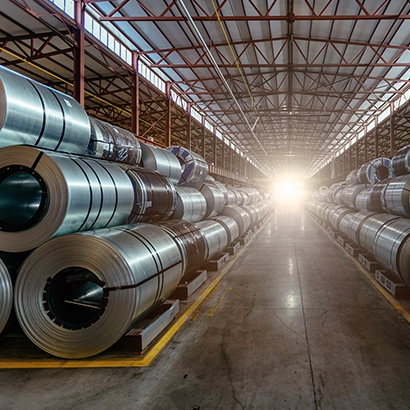In a prolonged tight labor market, U.S. companies will rely more on technology to boost efficiency and lower costs.
Productivity improvements in the U.S. have been lackluster for years. The growth rate of labor productivity—the measure of economic output per hour of work—has been 0.3% since 2005. That is half the average growth rate of 0.6% between 1947 and 2004.
Many economists think this trend is here to stay and that productivity will remain below historical averages because life-changing inventions like electricity, internal combustion engines, and indoor plumbing are unlikely to be repeated.
But Morgan Stanley Research is predicting the opposite: a rebound in U.S. productivity driven by more investment in technology, especially artificial intelligence, to boost worker efficiency and lower costs.
“Incentives to improve manufacturing productivity were limited in the past decade,” says Morgan Stanley U.S. economist Diego Anzoategui. “Now, however, companies are motivated to invest due to both better technologies and a higher cost of inaction.” For investors, this means considering which companies are adapting and which are continuing with outmoded strategies.
Shrinking Horizons
The need to bolster U.S. productivity occurs against the backdrop of a world economy that is becoming less global: Political tensions and an increased focus on energy security—coupled with the COVID pandemic—have led to a less centralized, multipolar model. Companies and countries are relying less on global supply chains and global market access and more on regional players and allies. One result of this shift has been a shrinking pool of labor for U.S. companies, making cheap labor, particularly for skilled manufacturing, harder to find.
That impact, combined with the lengthy recovery of COVID-related workforce participation declines, is expected to result in tight U.S. labor markets for years to come. Labor participation is cyclical, decreasing during recessions and taking about eight years to recover from a shock such as COVID.
“There is still a long road ahead to reach pre-pandemic levels of labor supply,” says Anzoategui.
Below Average Labor Supply Ahead
The scarcity of available workers and the resulting upward pressure on wages will increase the need for cost- and labor-saving alternatives. Increasing reliance on automation, artificial intelligence and machine learning should improve productivity and help protect margins.
Firms generally decide to innovate or adopt new technologies when aggregate demand is high and labor markets are tight, meaning that these changes are likely on the horizon. “Firms should boost their already robust investment in technology once business sentiment picks up again and economic activity revives, after an expected slowdown this year and into 2024,” says Anzoategui.
AI to the Rescue
AI has already spawned many innovations, and while it hasn’t yet shown up in productivity statistics in a meaningful way, technology adoption is not linear. New technologies generally take about 10 years to reach critical mass, so productivity gains generally occur with a lag. However, adoption speed has been increasing over time, and the embrace of new technologies such as AI might be faster than during the PC revolution.
Technological Adoption Over Time
Non-tech sectors, such as retail and manufacturing, appear to be particularly primed to invest in new technological capacity, and therefore may see more productivity gains. As a result, even markets with less direct tech exposure may benefit more this time than during the digital proliferation that happened in the 1990s and 2000s.
"The AI-focused productivity revolution could be more global than the PC revolution," says Anzoategui.
Spending Boost
The robust outlook for spending on IT suggests the adoption of new technology is likely to accelerate, helping support a rebound in productivity. A recent Morgan Stanley survey of chief information officers across sectors shows that IT net spending expectations for the next three years are about 2.5 times above pre-pandemic levels, even as COVID tailwinds fade and macroeconomic pressures intensify.
IT spending as a percentage of capital expenditure expanded from 28% to between 31% and 32% during the pandemic and remains above the stagnant levels of 2000 to 2020 as access to technology got cheaper.
“As with most disruption, the entities that seek out and invest in opportunities and embrace transformation are more likely to emerge as the winners in the coming productivity race,” says Anzoategui.
For complete analysis on the impact of technology on labor and productivity, ask your Morgan Stanley representative or Financial Advisor for the full report, “The Great Productivity Race,” (April 25, 2023).



